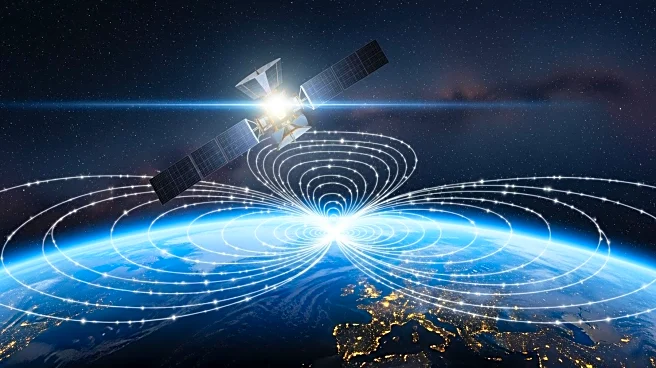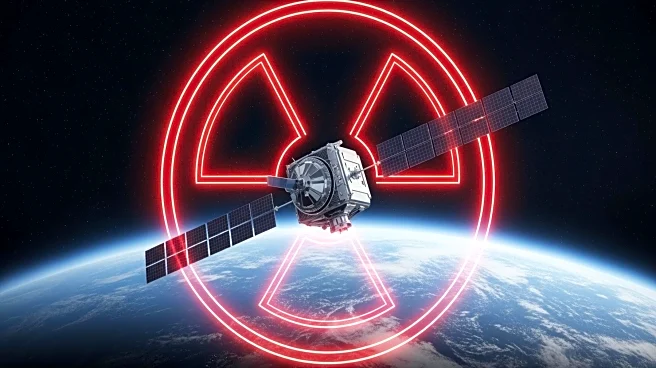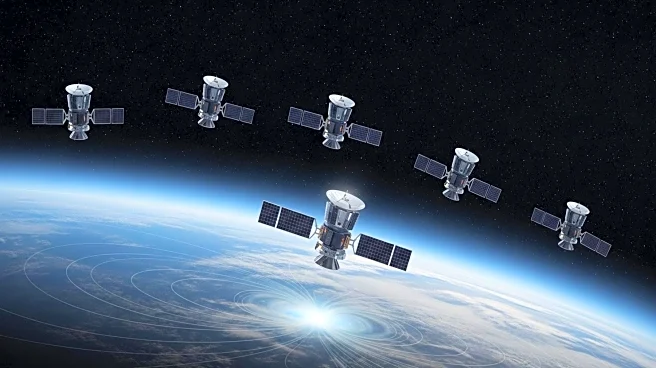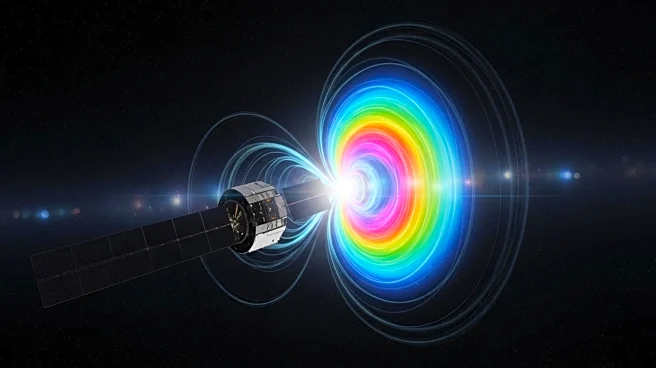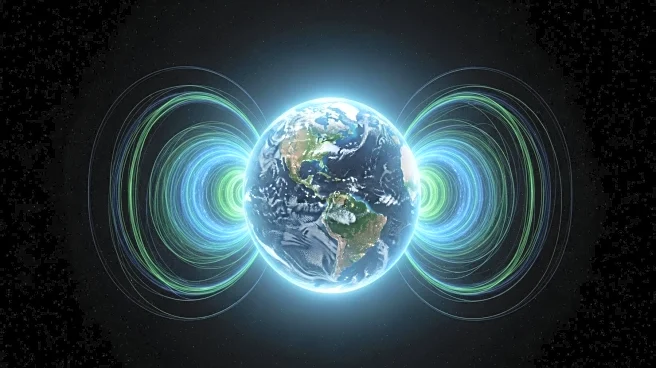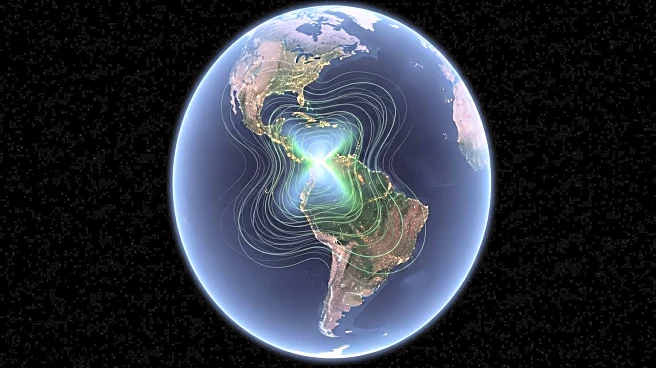What's Happening?
The European Space Agency (ESA) has been studying the Earth's magnetic field for 11 years through its Swarm operation, focusing on the South Atlantic Anomaly (SAA), a weak spot in the magnetic field over
South America. Originally discovered in 1958, the SAA has been expanding rapidly, extending its influence across the Atlantic Ocean toward Africa. This expansion is attributed to unusual behaviors at the boundary between the Earth's liquid outer core and the rocky mantle layer. The anomaly poses a risk to satellites and spacecraft in low Earth orbit, as they face higher radiation exposure, potentially leading to malfunctions or damage. The ESA plans to continue gathering data on the magnetic field to better understand these changes.
Why It's Important?
The growing weak spot in Earth's magnetic field has significant implications for satellite technology and space exploration. Satellites passing through the affected region are at risk of increased radiation exposure, which can lead to hardware malfunctions and blackouts. This necessitates changes in the design and operation of future spacecraft to mitigate these risks. The ongoing research by the ESA is crucial for developing strategies to protect space assets and ensure the reliability of satellite communications and data collection. The findings also contribute to our understanding of Earth's geophysical processes and their impact on technological systems.
What's Next?
The ESA's Swarm mission will continue to monitor the Earth's magnetic field, providing valuable data for future spacecraft design and operation. As the anomaly expands, space agencies may need to revise their strategies for satellite deployment and operation in affected regions. The ongoing research could lead to advancements in protective measures for satellites and a deeper understanding of Earth's magnetic dynamics. Collaboration among international space agencies may be necessary to address the challenges posed by the expanding weak spot.
Beyond the Headlines
The expansion of the South Atlantic Anomaly highlights the dynamic nature of Earth's magnetic field and its potential impact on technology. It raises questions about the long-term stability of the magnetic field and its effects on global satellite infrastructure. The anomaly's growth could influence international policies on space exploration and satellite deployment, emphasizing the need for adaptive strategies in response to geophysical changes.
